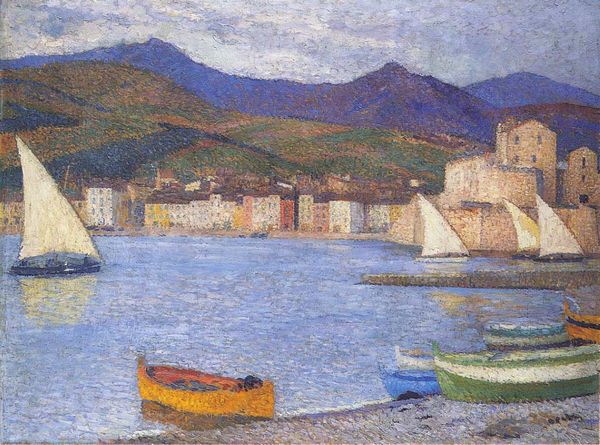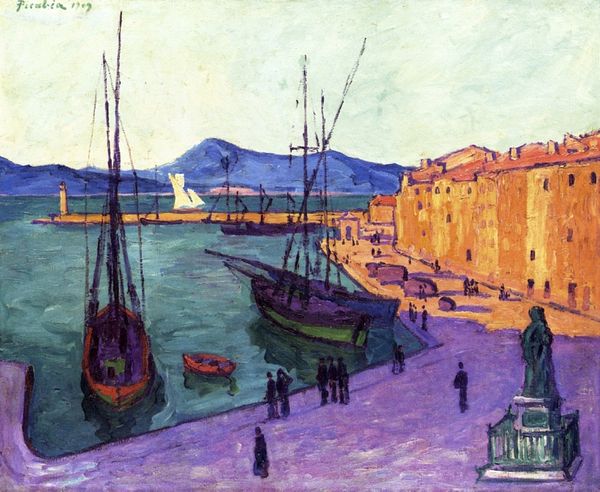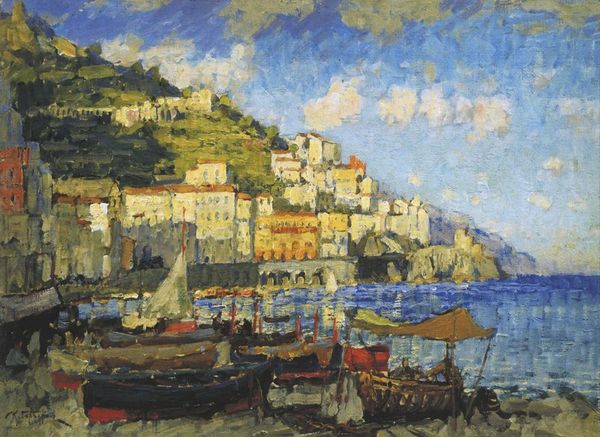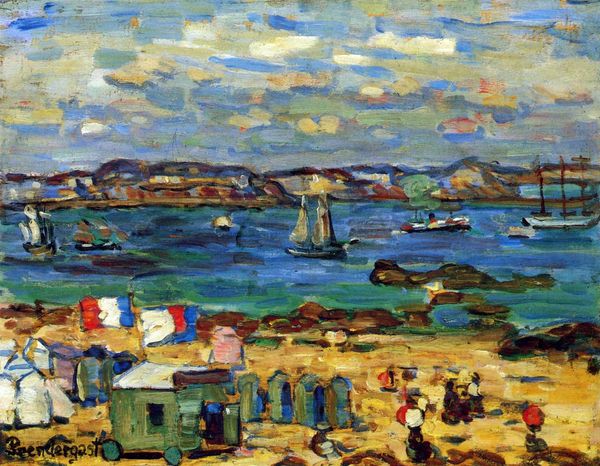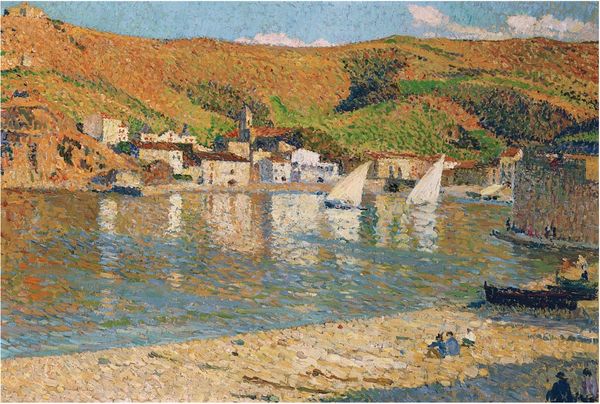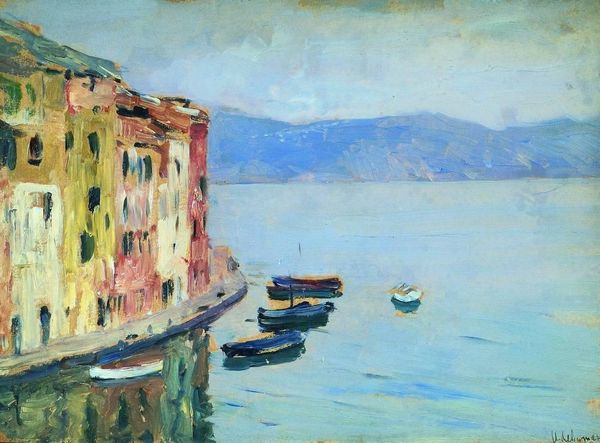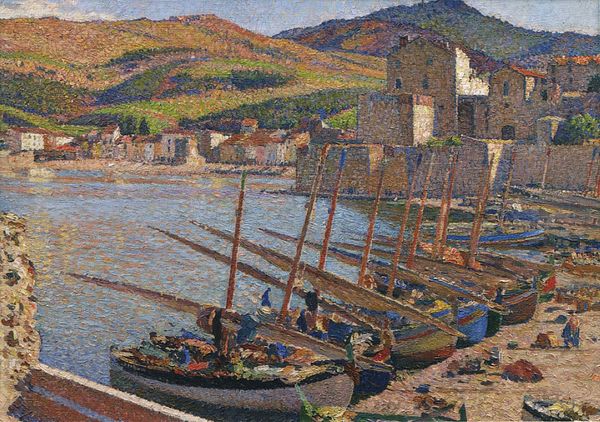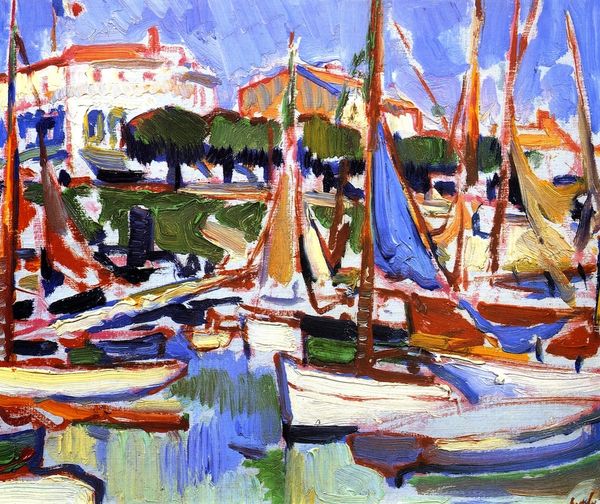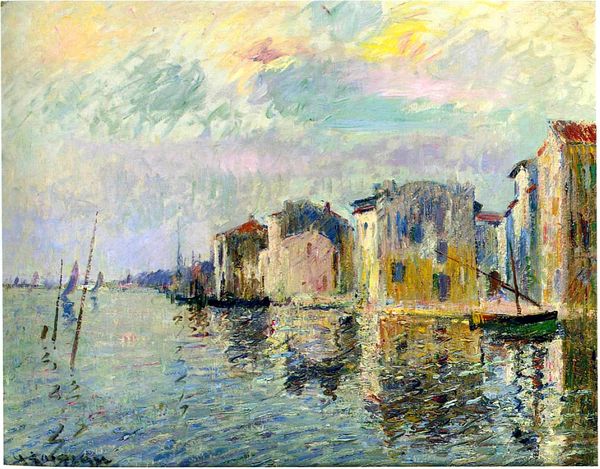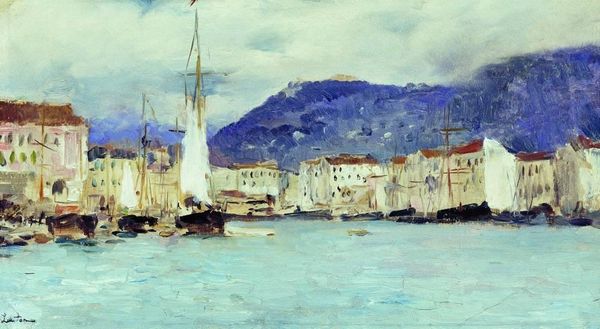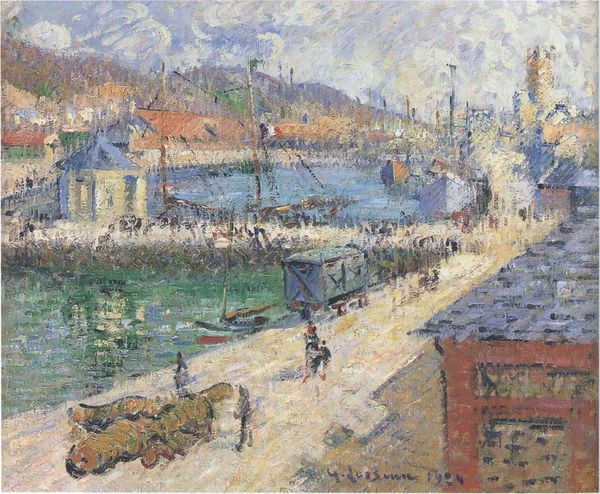
painting, oil-paint
#
boat
#
painting
#
oil-paint
#
landscape
#
impressionist landscape
#
oil painting
#
expressionism
#
seascape
#
water
#
cityscape
#
modernism
#
expressionist
Copyright: Public domain
Curator: We’re looking at "Rapallo Boats," an oil on canvas painted by Wassily Kandinsky in 1905. Editor: It's surprisingly cheerful for something painted amidst the burgeoning storm of modernism. The thick impasto and bright palette give it a playful quality, almost naive. Curator: Kandinsky employs short, deliberate brushstrokes, a clear indication of his engagement with Impressionist techniques, albeit with a nascent leaning toward Expressionism. Note how the composition hinges on these contrasting planes – the boats in the foreground versus the town and mountainous backdrop. Editor: It feels like a deliberate study of leisure, of people living and working by the sea, a perspective notably of a privileged class that has the means for such retreats, yes? One can imagine Kandinsky being drawn to the lively fishing harbor with these brightly colored boats, reflecting the dynamic between labor and pleasure that was then and continues to be stratified by class. Curator: Indeed. His treatment of light and color prioritizes emotional response over strict representation. The near-absence of any depicted people adds to the focus on forms in this bustling fishing port—we are meant to focus on Kandinsky’s rendering of these particular buildings and objects. Editor: Do you find it a romanticised or critical take, then, on leisure and the relationship of labor to landscape and living conditions, given the absence of these local populations from view? I suspect there might be tension that comes from considering, not only an escape from urbanisation into idyllic rural scenes, but who is provided that view versus who is a laboring participant within it? Curator: These tensions can certainly be layered into analysis. From the purely formal approach, the lack of precise details across the boats themselves suggests Kandinsky’s primary interest lay in conveying the essence of a scene. By moving beyond literal accuracy, Kandinsky makes us consider what parts the viewer must play to piece it all together—through his careful employment of these brushstrokes to bring the subject into something real. Editor: A useful reminder. And while formalism allows the pleasure of analyzing composition, remembering art's entanglement with class and perspective provides useful social context, which perhaps informs further discussion, even, on modernism and social critique. Curator: A great entry point, surely, into his later work and theoretical frameworks, and how color and form moved even more deeply into realms of abstract expression. Editor: Indeed, a lens for us to consider who is reflected and who is obscured within such seemingly neutral artistic experimentations.
Comments
No comments
Be the first to comment and join the conversation on the ultimate creative platform.
